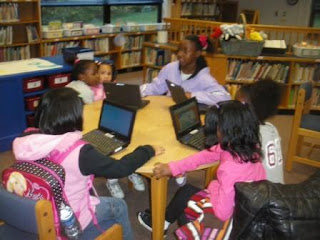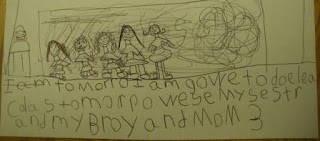 These pictures were taken in our library before school one morning. Our librarian (Library Goddess, as I like to call her) opens our library for the 30 minutes before school begins each day. Even when meetings happen in the library she lets the kids in. She holds high expectations for them and sends anyone away who can't be polite and respectful. On a daily basis she helps kids learn routines, social skills, and other basic skills in addition to finding fabulous books.
These pictures were taken in our library before school one morning. Our librarian (Library Goddess, as I like to call her) opens our library for the 30 minutes before school begins each day. Even when meetings happen in the library she lets the kids in. She holds high expectations for them and sends anyone away who can't be polite and respectful. On a daily basis she helps kids learn routines, social skills, and other basic skills in addition to finding fabulous books.
 Students can use the netbooks, do puzzles, play games, play with puppets, and check out books. Most mornings the room is packed. Some kids are there every day.
Students can use the netbooks, do puzzles, play games, play with puppets, and check out books. Most mornings the room is packed. Some kids are there every day.
There is no expectation that our librarian (and the also awesome library aide) spend their time this way. It is a choice they made. I find it hard to imagine being willing to give up that time before school - I need it to get ready for the day. But these ladies recognized a need and stepped up. Something we see happening in schools everyday. We should celebrate it more often.



























